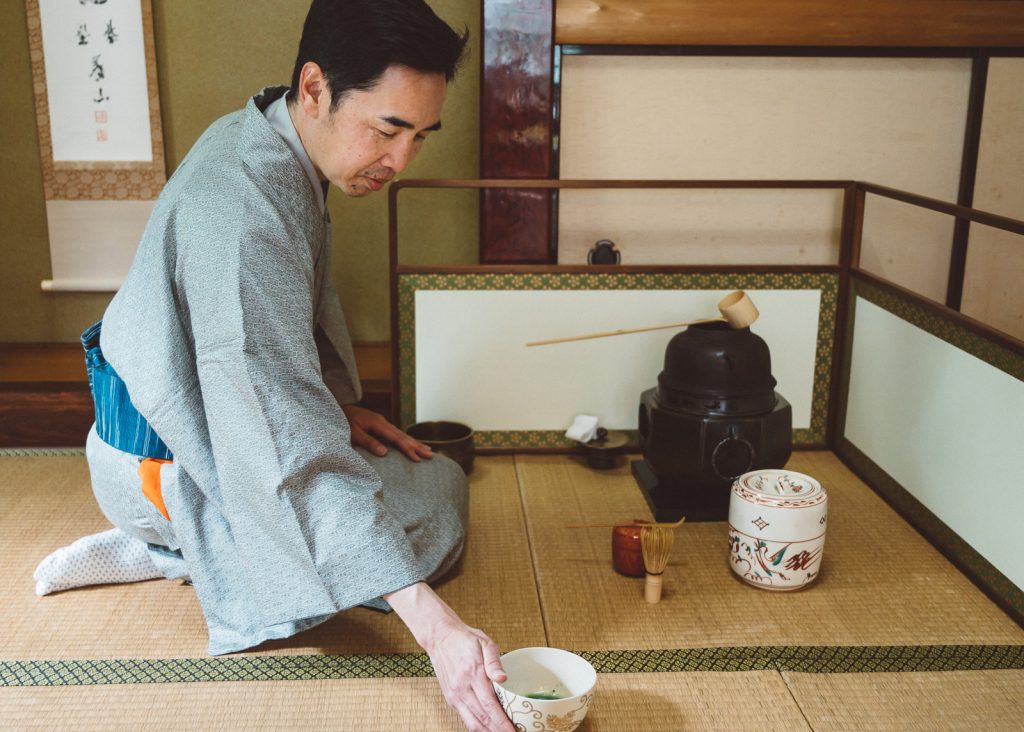
Todd Fong is an American freelance writer living in the greater Tokyo area. He has visited, written about, and photographed Iiyama City many times and considers it one of his favorite escapes from the big city.
My first image of Iiyama City remains vivid in my mind nearly three years later. Stepping off of the Shinkansen bullet train from Tokyo onto the platform of sleek, modern Iiyama Station, the mountains across the valley gleamed with autumn colors. Outside, the sunlight seemed brighter, felt warmer on my face, with no urban haze to dilute it. The crisp mountain air seemed almost palatable as I took a deep breath of it. Iiyama, a place I return to in my mind whenever I need a bit of peace.
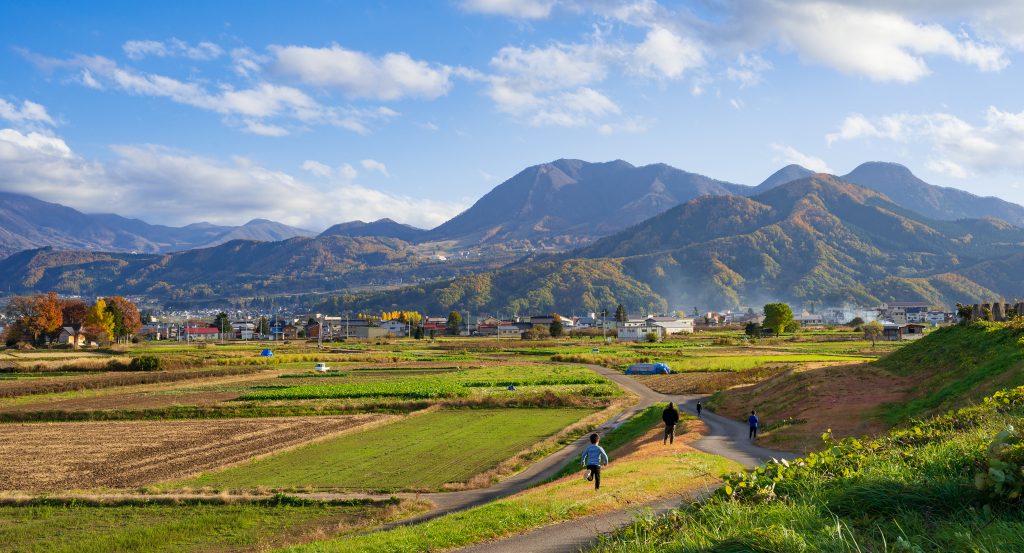
Since that fateful trip, I have returned to the Iiyama area numerous times for business and pleasure, and often a bit of both. While the northern Nagano area is most famous for winter sports (and deservedly so), my favorite months in Iiyama are the green ones. When the days are warmer, and the ground is free of snow, the lush forests and other vegetation come alive. These are the days when you are free to explore all of the natural beauty of the Nagano mountains, on foot, bicycle, or even on a raft.
Shin-etsu Trail: The Appalachian Trail of Japan
Start with one of the favorite destinations of trekking enthusiasts, the Shin-etsu Trail, winding its way along the ridge of the Sekida Mountains for 80 kilometers between Nagano and Niigata prefectures. Like America’s Appalachian Trail, the Shin-etsu Trail is developed and maintained by a non-profit conservancy and many devoted volunteers, thanks to whom the trail is being extended to 110 kilometers in the fall of 2021. It is open to hikers after the snow has sufficiently melted, usually between mid-May and late June, and remains open until early November.
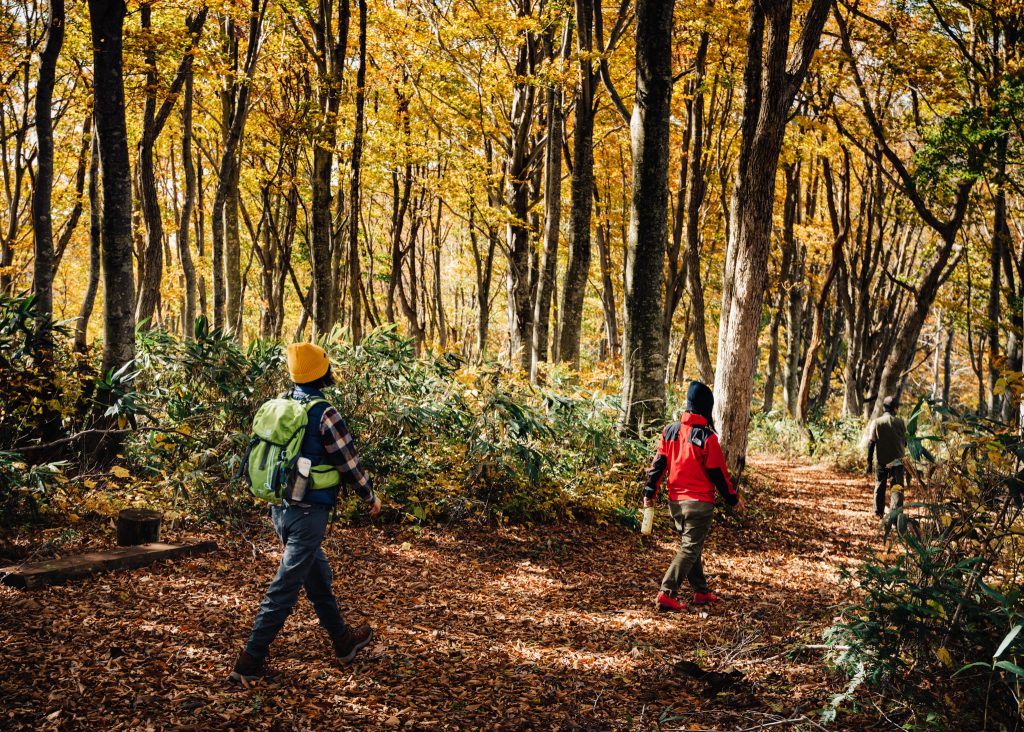
Depending on the season, you may enjoy fields of alpine wildflowers in bloom, crystal clear ponds and lakes reflecting fiery fall foliage or snow-dusted mountain peaks, lush evergreen or golden leaved beech forests, and wetland habitats for hundreds of unique animals, insects, and flora. To make the most of your journey, English-speaking guides can be hired through the conservancy who are knowledgeable about both the trail and the nature surrounding it.
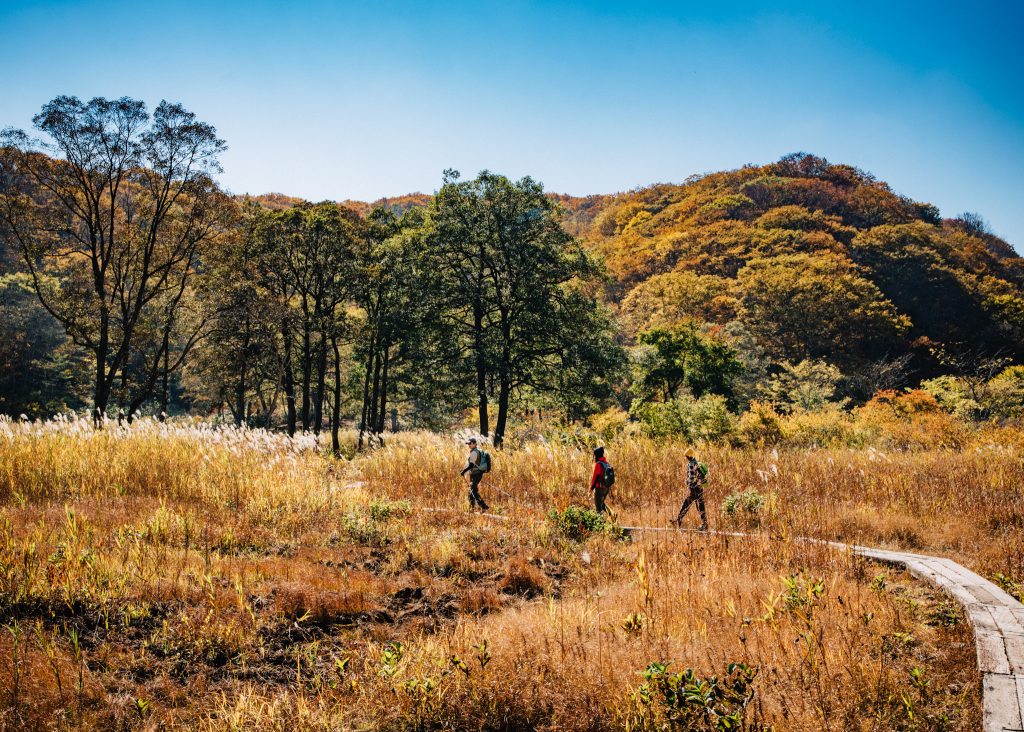
The Shin-etsu Trail is divided into six sections, and many of the local accommodations in Iiyama provide pickup and drop-off services at the section breaks for those who prefer to have a great meal and comfortable bed to sleep in after a day on the trail. It is also possible to tent camp on campsites between the trail sections.
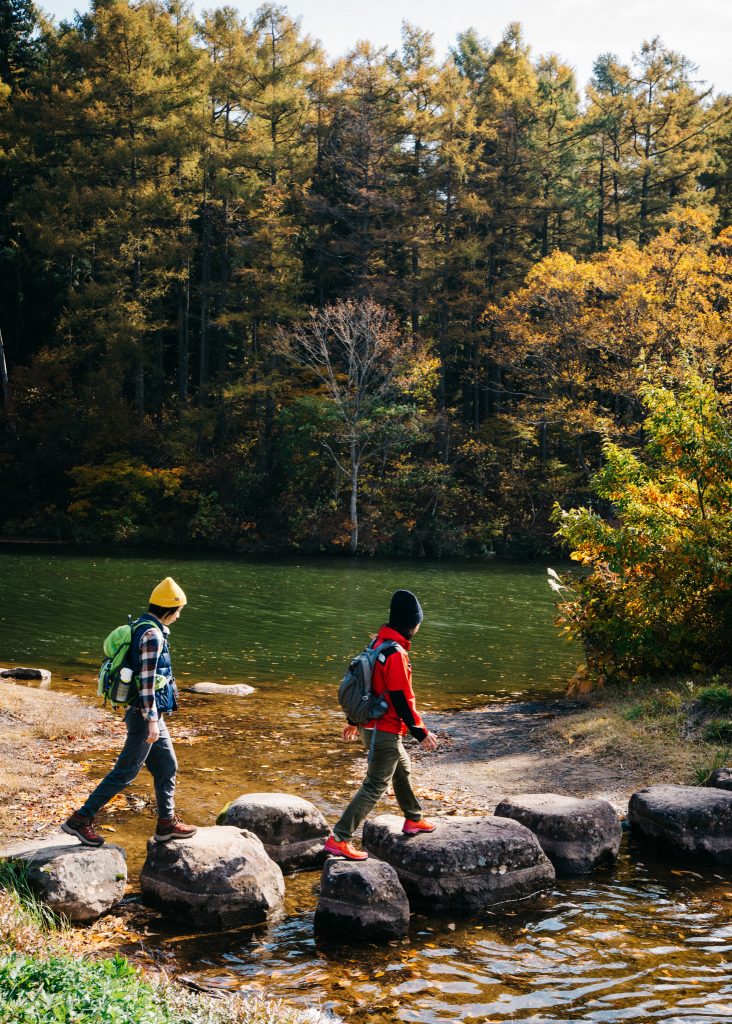
Most visitors to Japan won’t bring trekking gear from home, so you can rent everything you need to trek safely and comfortably at reasonable rates from the Activity Center on the ground floor of Iiyama Station.
Kosuge no Sato: The Ancient Spiritual Sites of Iiyama
On the opposite side of the northern Nagano Valley, Kosuge is nestled in the foothills, marked by ancient cedar trees towering high over the tiny village. Several small but important spiritual sites remain in the village, which are no longer maintained by the Shinto or Buddhist priesthoods but are carefully preserved by the villagers themselves.
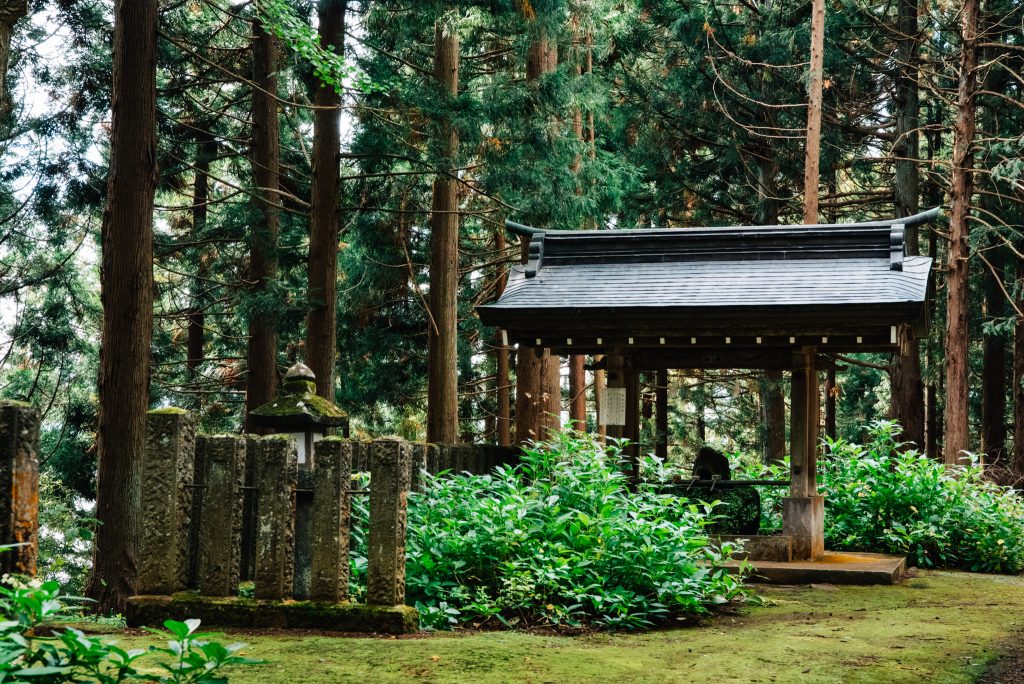
The original buildings likely existed here for over a millennium, but war and acts of revenge have taken their toll on them. Nearly 1,000 years ago, the area was a war zone between the competing dynasties of Takanashi and Ichikawa, which destroyed much of the region. After rebuilding, there were a few centuries of peace before the forces of two of Japan’s famous samurai warlords clashed here again in the 15th and 16th centuries. One of them, Takeda Shingen, the legendary “Tiger of Kai”, burned down all but one of the important buildings in 1567 as an act of revenge.
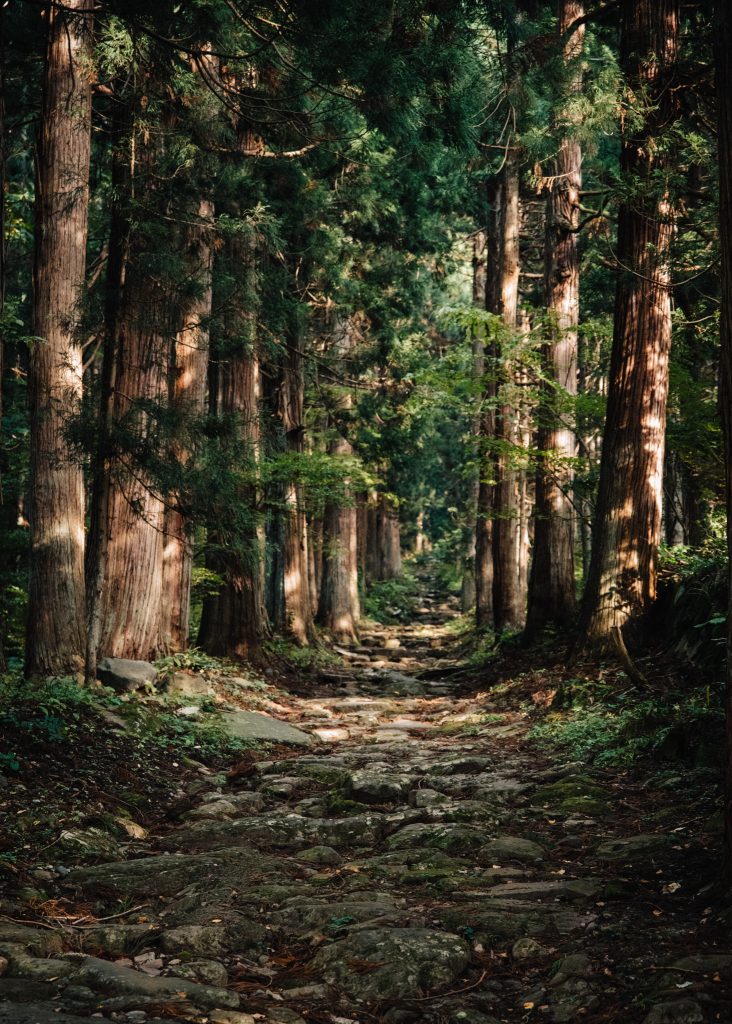
Follow the road to visit each of the spiritual sites up the hillside, and you will eventually reach the third torii gate, which marks the entrance to the ancient shrine itself. Ancient stone steps flanked by rows of cedar mark the first 800 meters of the climb, and the shrine is another 400 meters beyond that. It isn’t a hike for the faint of heart, but the experience of following in the path of thousands of spiritual pilgrims before you can inspire you to complete it.
Cycling the Nagano Valley
If you prefer to explore the Iiyama area on two wheels rather than two feet, you can rent bicycles or book a cycling tour at the Activity Center without even leaving Iiyama Station. Bikes appropriate for riders of all ages and physical abilities are available to rent for those who wish to explore the area freely. Or you might opt to book a cycling tour of the valley as I did.
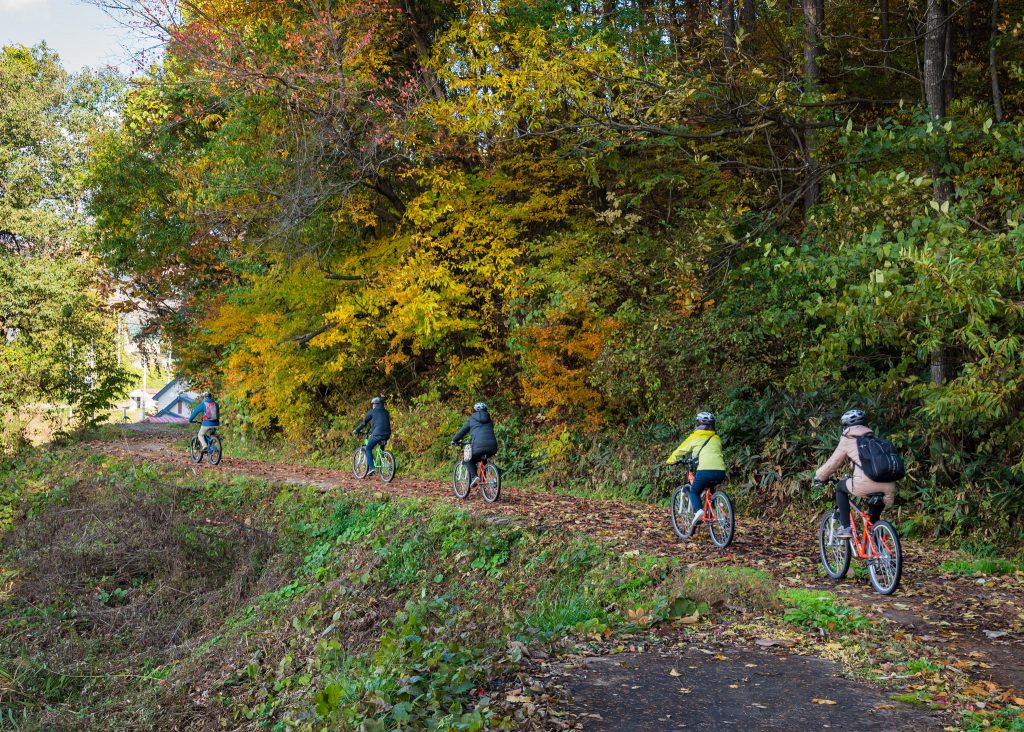
The three-and-a-half-hour tour took us through neighboring Kijima-daira Village before looping back through central Iiyama, where we visited several of Iiyama’s picturesque shrines and the Iiyama Castle Ruins. The pace was slow enough to be relaxing for all levels of writers, with plenty of opportunities to take photos of the gorgeous pastoral scenery.
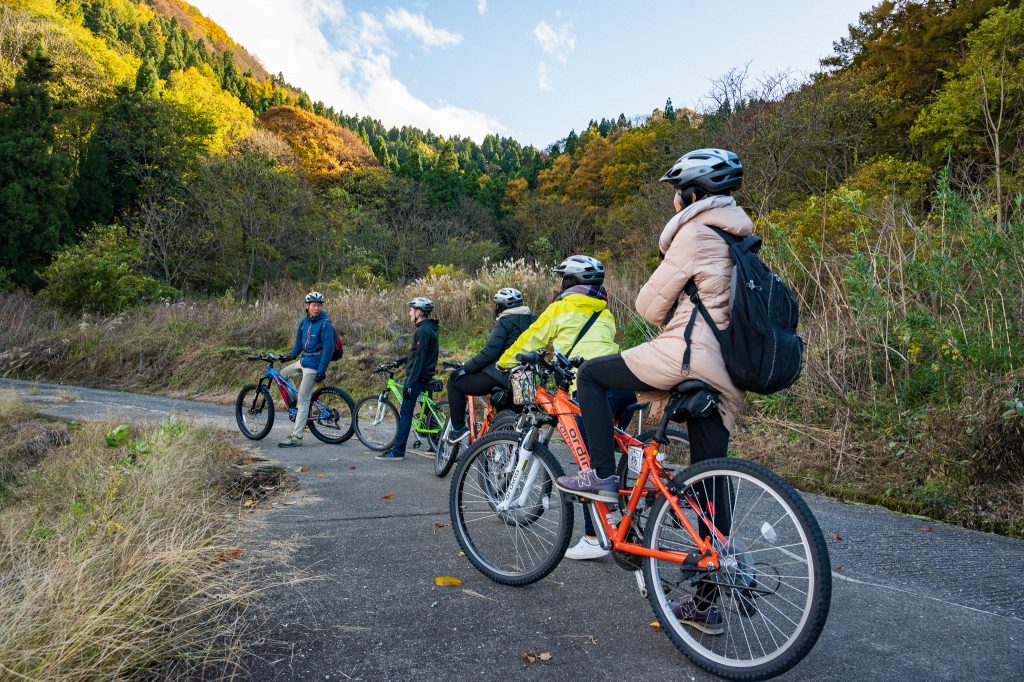
Our friendly guide communicated fluently in English and shared his knowledge about the area, including its geography, architecture, and history. He was also conscious of our safety, keeping us off the busy highways as much as possible and along the less-trafficked country roads. For me, it was a perfect way to be introduced to the Iiyama area so I could explore more on my own later.
Cozy Accommodations in Iiyama
As much as I love exploring the nature of Iiyama, I have equally enjoyed having a comfortable, friendly place to return to at the end of a busy day. Shikisainoyado Kanoe is one of those places I think of returning to again and again for its friendly service, delightful meals, and simple but comfortable accommodations.
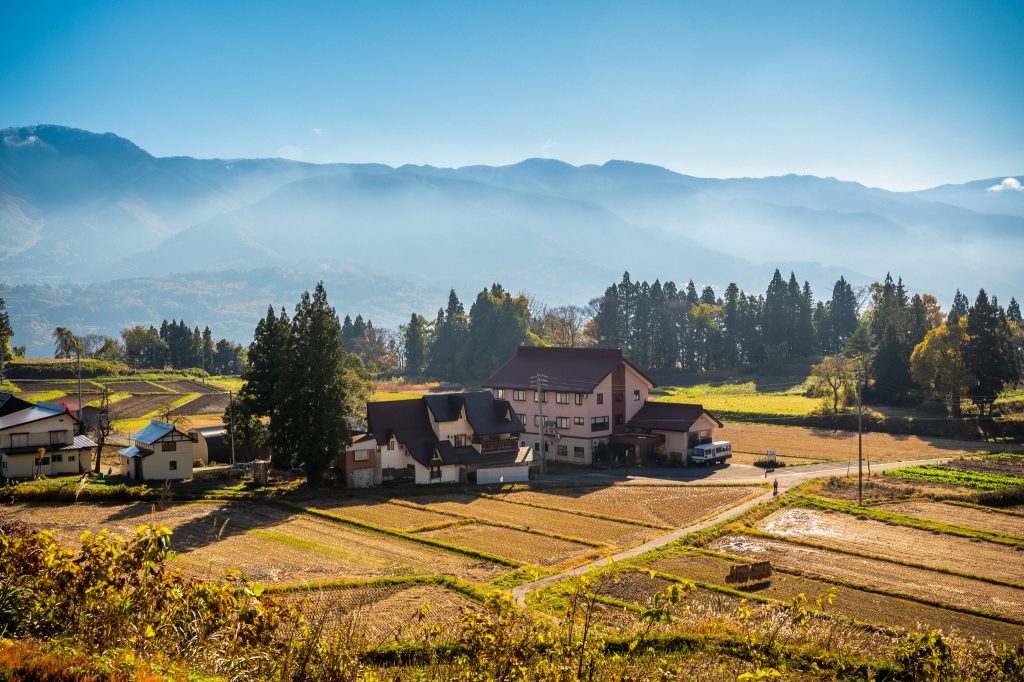
Kanoe is a family-run inn, like most of the accommodations in Iiyama. Around the inn are agricultural fields, many of which provide the ingredients for the incredible meals prepared here. The style of the meals may be homecooked, but the quality is gourmet, using the freshest local ingredients in an ever-changing mix of traditional and original recipes.
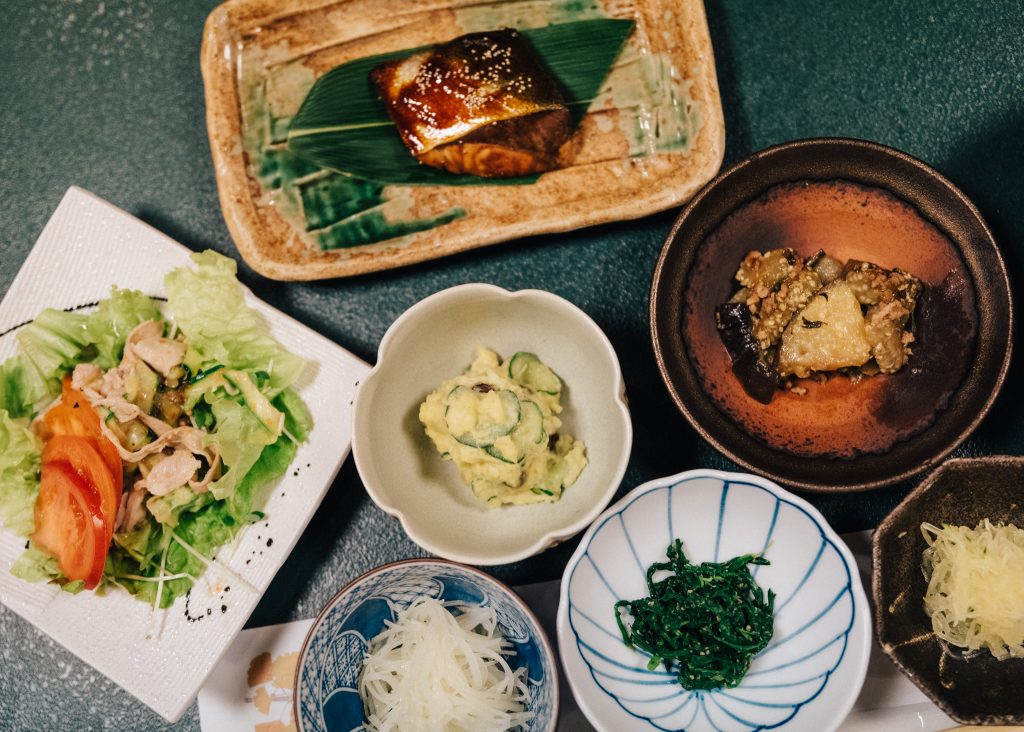
While the accommodations themselves are simple, they are relatively spacious and comfortable to relax in. There is an onsen bath on site, a perfect place to soak your sore body after a day of physical activities.
The staff certainly go out of their way to make sure you are well cared for, which ends up feeling like you are a guest in a family home. On one visit, I even took a cooking lesson to learn how to make the local style of sushi, sasazushi, wrapped in a bamboo leaf.
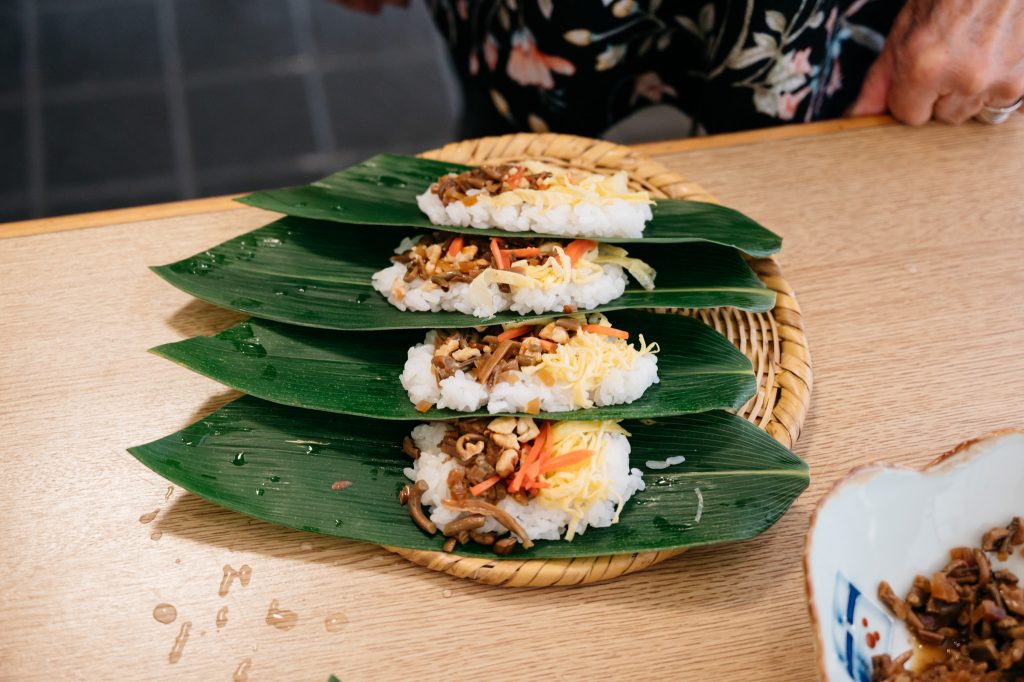
Kanoe is one of many family-run accommodations in Iiyama City. Similar types of accommodations dot the city, especially around the Togari Ski Resort. On one trip, I met the proprietress of another inn that not only pampers you with their hospitality, but also runs a pet hotel to pamper your pets while you are out enjoying the area. On another, I stayed at Guesthouse Togari, where the gracious hosts packed us a lunch to take on our daily excursion. This sort of thoughtful kindness is an everyday occurrence in Iiyama, and one of the many reasons I am fond of returning.
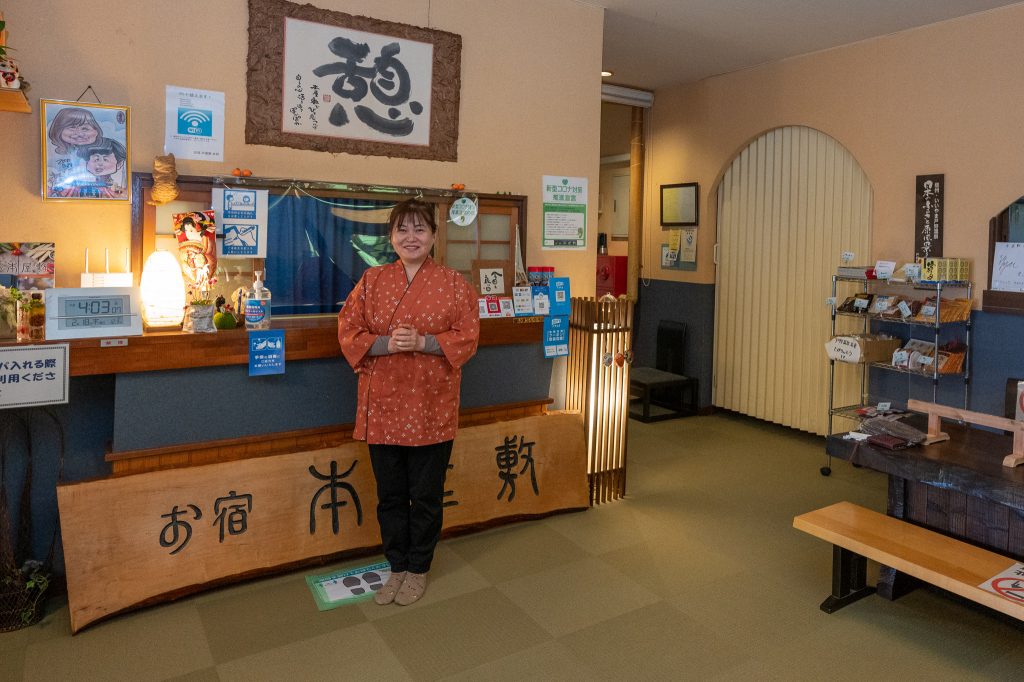
Less than 2 hours from Tokyo by the convenient Shinkansen bullet train, Iiyama is a favorite place to get away and enjoy wide-open natural spaces, outdoor activities, and homestyle hospitality. It is a slower pace of travel suitable for the post-corona era, where you can focus more on being rather than doing. And in an age of constant stress and worry, what more could you ask for in a holiday destination?



